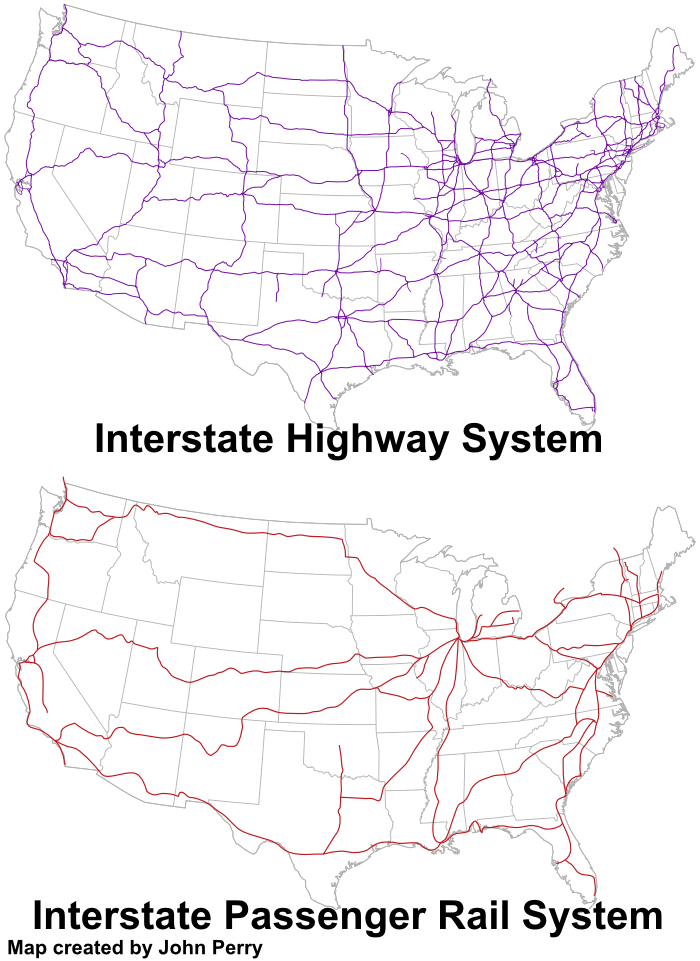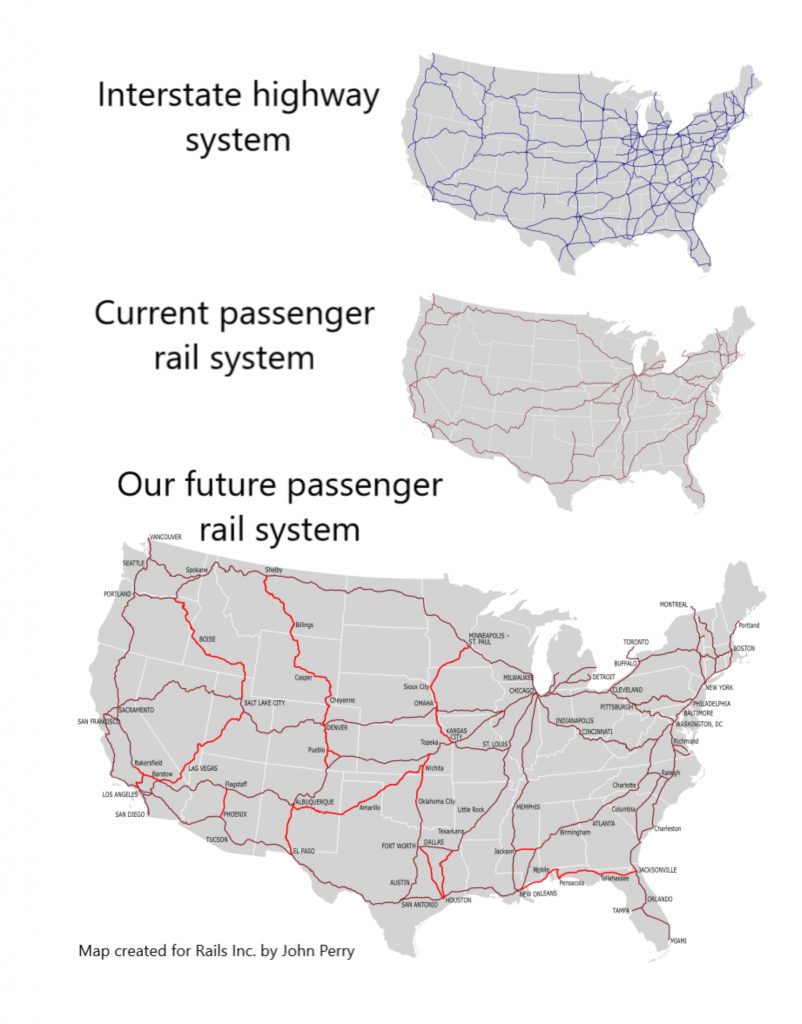A Case for Public Ownership of our Track Networks
It should be no surprise by now that America’s passenger Rail situation is a classic example of good news-bad news.
For the last 20-30 years, there has been a renaissance in metro and regional rail transit, spearheaded by local officials and their constituents, notably in many places long known for the dominance of the personal auto and for a “conservative” reputation. This graph may show part of the reason for that.
The national part of this picture, however, stinks. American transportation in general is characterized by publicly-owned (socialized) infrastructure——highways, roads, airports, waterways, police, firefighters, air traffic controllers, channel markers, the Coast Guard——you get the picture. Running around all over these systems is a reasonable mix of private and public moving parts——cars, trucks, buses, aircraft, barges, etc etc.
So what about our Rail infrastructure and its moving parts?
With passenger Rail, the model is upside down. The national infrastructure——tracks, signals, control centers, bridges, culverts——are mostly in private hands; those of the Class I (big) freight railroads. For moving parts, we have one underfunded passenger Rail company (Amtrak), neither properly socialist nor properly capitalist, whose meager budget is hostage to the whims of each changing Congress. These Congresspeople are largely dependent (for their campaign funds) on the very corporate entities most hostile to passenger service; which include said Class I’s. Therefore our national passenger rail network can best be described as sketchy, as illustrated here:

Freight railroads have never been overly friendly towards passenger trains on their tracks. Amtrak was in fact created in 1971 to relieve Big Freight of its passenger burden, and is still generally treated as a pariah on its tracks. One of the new Amtrak’s first policy decisions was to terminate some routes; Albuquerque-Denver, for example. Amtrak has ever since been an undersized skeletal version of what it could be. Note this historical regression, courtesy of Phil Streby of Rail Users Network (RUN).
We believe these problems never really go away because our track infrastructure has, since the Manifest Destiny land grants of the mid 1800’s, almost always been left in the hands of Big Freight, not of the general public, which many like to call “The Government”.
We are not alone in calling for public ownership of the rail infrastructure (although we have been speaking and writing about this for at least 15 years). A small but increasing number of voices across the nation and many in the rest of the world are now advocating for it, or already enjoy it. The Railroad Workers United (RWU) has made an important contribution to the debate, in their the Spring 2020 edition of their newsletter, The Highball. (Is it Time for U.S. Rail Workers to Consider Railroad Nationalization? Page 11.)
Contrary to big-business propaganda, corporate control of major national infrastructure, notably that of our trains, is only “efficient” by certain restricted definitions; namely those of corporate leaders and preferred shareholders. Freight trains are becoming fewer and way too long (2 miles?!) for safety and efficiency in general.
This Fewer And Bigger business model screws not only passenger service, but the flexible and customer-friendly freight and express service afforded by more and smaller trains moving more places, such as over shorter and lighter-weight track segments (many of which are being torn up). For further reading, there are two good articles on pages 9, 10 and 11 in the October 2020 issue of Trains Magazine.
Amtrak has recently published a map called “Amtrak Connects US”, a projection of what they’d like to see the national network look like in 2035. It shows a big improvement over what we have now, but there are serious gaps, notably Louisville KY-Nashville TN, and Pueblo CO-La Junta CO. Compare this map with our dream-system map:

Getting Fuller Use out of our Tracks:
Two Rails Inc documents, Getting the Most Out of Our Tracks and The Tomorrow Train, illustrate how publicly-owned track infrastructure (under either federal or state control) can be made to serve all segments of society ——and even generate revenue (make money).
In short, we believe that our Rail infrastructure operating model should more resemble those of all our other American transportation networks; ie, public utilities built and maintained for the good of everybody——including business interests.
A final note about “efficiency” and job creation:
A lot of trains and their infrastructures under “government” control are actually operated and maintained by private companies; experts in their fields. New Mexico’s Rail Runner Express (NMRX) for example, is actually operated by Herzog, a company which performs these services for various other public transit agencies.


